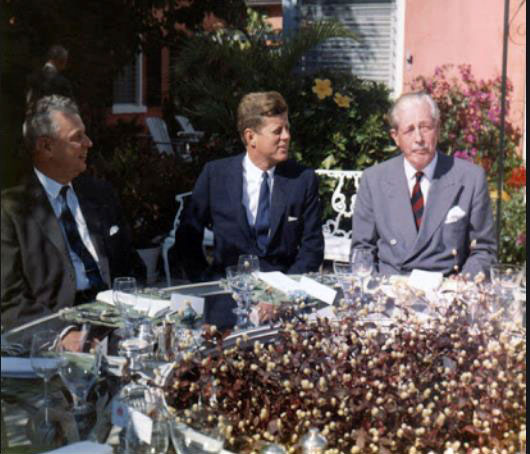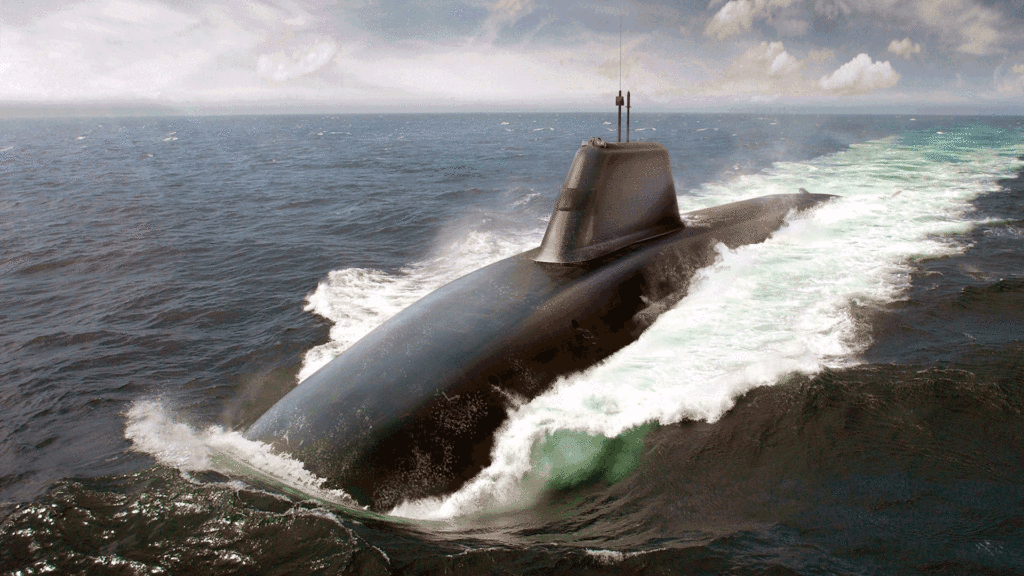At least one of the Royal Navy’s four ballistic missile submarines is always on patrol, ensuring a continuous at sea deterrent, 24 hours a day, 7 days a week, 365 days a year (or 366 in a leap year).
Dreadnought is about maintaining that capability after the current Vanguard class submarines reach the end of their operational life and the Alliance is part of making that happen. The Dreadnought programme is of the utmost importance to our national security and that of our NATO allies.
Very few countries have the capability to design, build, operate and maintain nuclear submarines, let alone deliver a Continuous At Sea Deterrent without interruption for more than 50 years.
How it all began
The history of the UK’s nuclear deterrent stretches back to 1958 and the signing of the UK and US Mutual Defence Agreement (MDA) and then the Nassau Agreement, which paved the way for the 1963 Polaris Sales Agreement (PSA). The MDA and the PSA underpin a relationship between the United States and the United Kingdom to exchange nuclear information, technology and materials for nuclear propulsion and nuclear warheads; and allows the United Kingdom to purchase the Trident II Strategic Weapons System for our submarine based nuclear deterrent .
Construction on the Resolution-class of ballistic submarines began soon after the PSA was signed, at Vickers Armstrong in Barrow and Cammell Laird in Birkenhead. The first boat, HMS Resolution, was launched in September 1966 and completed her first deterrent patrol in June 1968. By 1969 the UK began Continuous At Sea Deterrent (CASD) with the 4 Resolution class boats.
Work on the next generation of nuclear powered ballistic submarines also began with the first of class, HMS Vanguard, launched on 4 March 1992. Her sister boats HMS Vengeance, Vigilant and Victorious followed and CASD was handed over to a new generation of Royal Navy submariners.

The Dreadnought Class

Dreadnought
HMS Dreadnought was the name of the UK’s first nuclear-powered submarine, launched in 1960.
It also has extensive historical significance with the name borne by no fewer than nine Royal Navy ships. In 1588, Royal Navy Officer Sir Francis Drake sailed a Dreadnought to repel the Spanish Armada and more than 200 years later, another Dreadnought used its firepower to help Lord Nelson win the Battle of Trafalgar.
Valiant
Valiant comes from the Valiant class of nuclear-powered fleet submarines in service with the Royal Navy from the mid-1960s until 1994.
The original Valiant submarine, the second of the UK’s nuclear-powered submarines, was built and commissioned at the Barrow-in-Furness shipyard and launched in December 1963.
Warspite
Warspite goes back to 1595 and was the last ‘great ship’ to be built during the reign of Queen Elizabeth 1.
Warspite has been carried by eight Royal Navy vessels – the last being the UK’s third nuclear submarine, launched in 1965, which operated for more than 20 years.
King George VI
King George VI, named after the King’s grandfather, King George VI, has never been used before by the Royal Navy.
The then Prince Albert had particularly strong naval connections. Having entered the Royal Naval College, Osborne in 1909 and progressed to Dartmouth in 1911 he commissioned as a Midshipman in the Battleship HMS Collingwood.
The alliance
The Dreadnought Alliance was formed between the Ministry of Defence’s Submarine Delivery Agency (SDA), BAE Systems (BAES) and Rolls-Royce (RR).
This innovative approach meets recommendations outlined in the 2015 Strategic Defence and Security Review to harness effective working relationships with industrial partners to improve performance.
Our mission is to deliver four Dreadnought submarines with the first one ready for patrol in the early 2030s.
A collaborative Alliance to manage the Dreadnought Programme – with the Royal Navy as the ultimate customer.
Programme
The Dreadnought programme is about the design, development and manufacture of four ballistic missile submarines that will maintain the UK’s nuclear posture of Continuous at Sea Deterrent.
Alliance partners
We are a commercial alliance between the Ministry of Defence and its two key industrial partners, BAE Systems Submarines and Rolls-Royce Submarines.
Progress
Our first Dreadnought submarine will be ready for patrol in the early 2030s, followed by 3 more in its class.
The Dreadnought programme’s number one strategic priority is to deliver Boat 1, HMS Dreadnought, on time and the following three boats on schedule, to maintain the UK’s national security. This is an incredibly exciting challenge and we have assembled an excellent team of the brightest and best engineers, project managers and procurement experts. There are amazing career opportunities for anyone joining us.Alex McMillan, Submarine Production Alliance Managing Director


